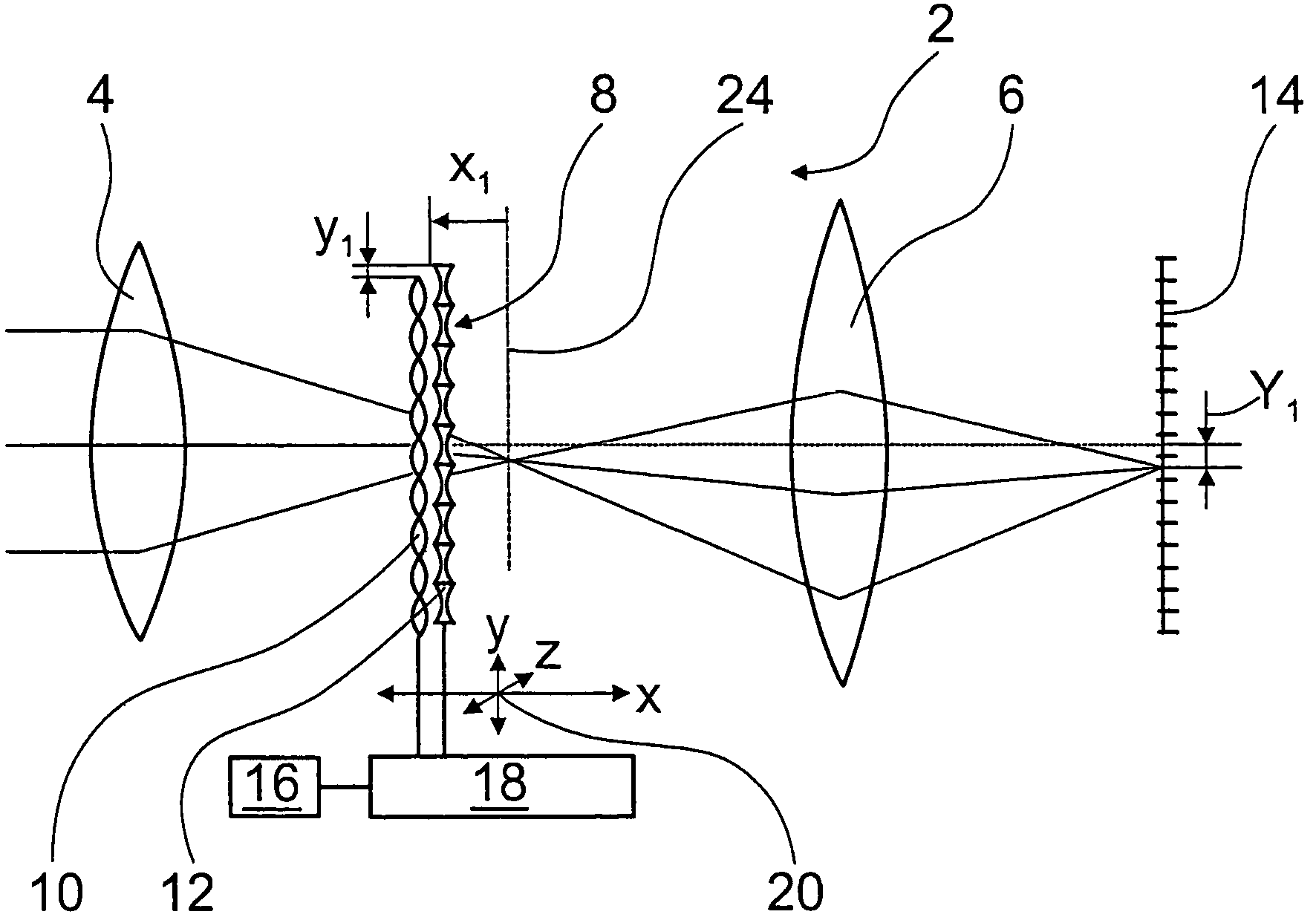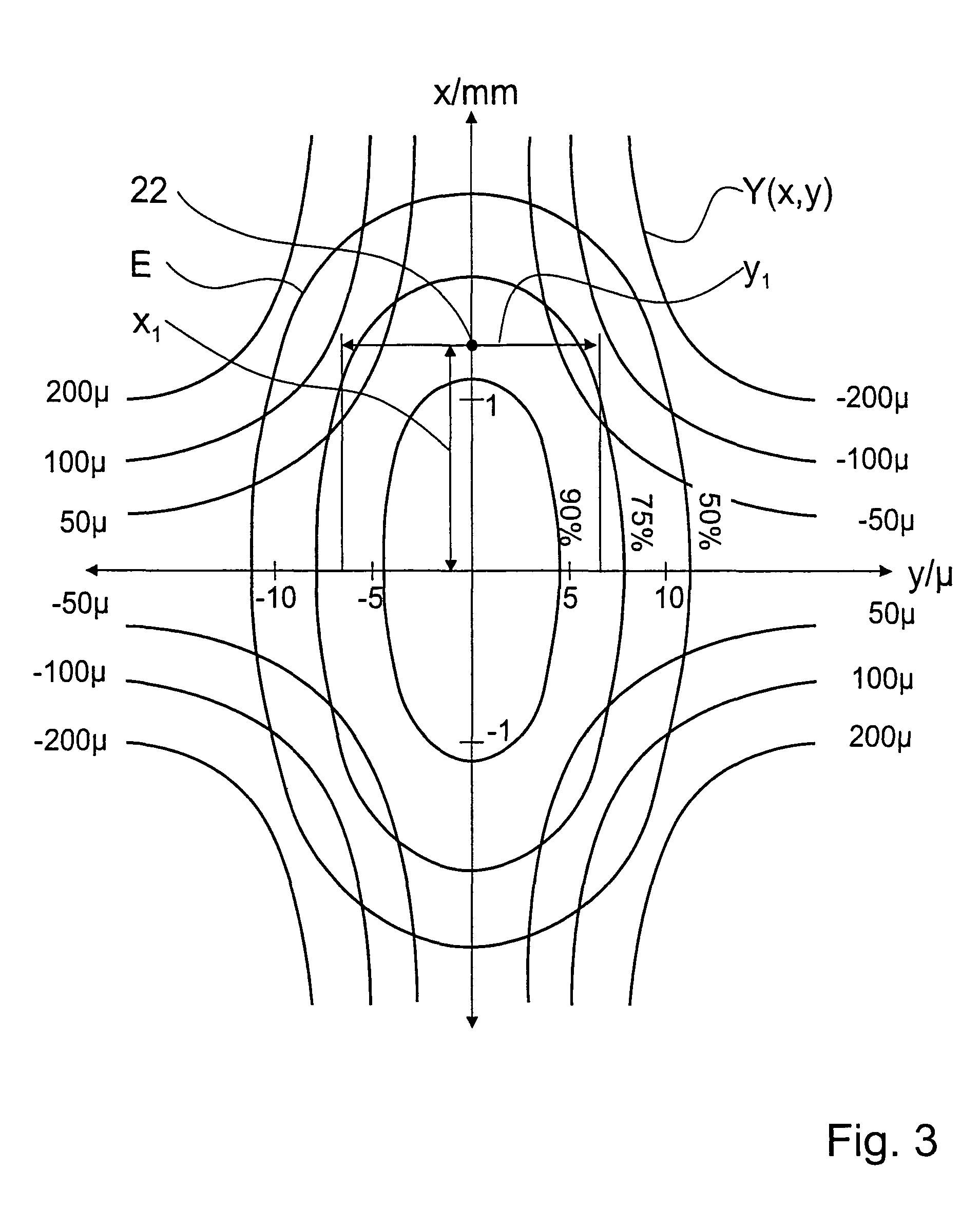Imaging device for the stabilized imaging of an object onto a detector
a technology of imaging device and detector, which is applied in the field of imaging device for the stabilized imaging of an object onto a detector, can solve the problems of unsharp recording of objects, and achieve the effects of reducing scattered light loss
- Summary
- Abstract
- Description
- Claims
- Application Information
AI Technical Summary
Benefits of technology
Problems solved by technology
Method used
Image
Examples
Embodiment Construction
[0027]FIG. 1 shows a highly schematic illustration of an imaging device 2 comprising a first optical unit 4, which is illustrated diagrammatically as a lens, and a second optical unit 6, which is likewise illustrated only diagrammatically as a lens for the sake of clarity. A third optical unit 8 is arranged between the first optical unit 4 and the second optical unit 6 and has an optical element configured as a first micro-optical lens array 10 and a second micro-optical lens array 12. The micro-optical lens arrays 10, 12 each comprise 256×256 lenses formed as converging lenses in the first lens array 10 and as diverging lenses in the second lens array 12. Each lens of the first lens array 10 is assigned to a lens of the second lens array 12. Moreover, the imaging device 2 comprises a detector, 14 having 256×256 detector cells, the boundaries of which relative to one another are indicated using horizontal lines in FIG. 1. Each detector cell is provided for taking up an image pixel. ...
PUM
 Login to View More
Login to View More Abstract
Description
Claims
Application Information
 Login to View More
Login to View More - R&D
- Intellectual Property
- Life Sciences
- Materials
- Tech Scout
- Unparalleled Data Quality
- Higher Quality Content
- 60% Fewer Hallucinations
Browse by: Latest US Patents, China's latest patents, Technical Efficacy Thesaurus, Application Domain, Technology Topic, Popular Technical Reports.
© 2025 PatSnap. All rights reserved.Legal|Privacy policy|Modern Slavery Act Transparency Statement|Sitemap|About US| Contact US: help@patsnap.com



